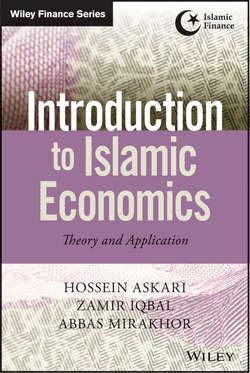Читать книгу Introduction to Islamic Economics - Mirakhor Abbas - Страница 7
На сайте Литреса книга снята с продажи.
Chapter 1
Economic Systems
ОглавлениеLearning objectives:
1. The differences between economic systems and the role that government plays.
2. How the ideal Islamic system differs from the Western market capitalist system.
3. The role of markets and how they differ in Islam and in the market capitalist system.
4. What institutions are and why they matter for economic prosperity.
5. Governments have an important role no matter the system.
Over the years, a number of different economic ideologies and systems have been proposed and promoted. As with most other things in life, economic doctrines and systems have a limited shelf life and evolve with time. While in 2014 the mixed capitalist market system of the Western world, especially that in the United States, may appear preeminent, it received a number of shocks at its very foundation. The financial crisis of 2007–2008 with its extensive fallout and the rapid rise of China as an economic power have raised new and fundamental questions about the long-term direction and viability of the laissez-faire mixed capitalist system practiced in the United States and other Western nations.
After World War I, economists generally realized that neoclassical economics was not well equipped to address the reasons underlying unemployment, business cycles, and their mitigation and amelioration. During the Great Depression, John Maynard Keynes's General Theory of Employment, Interest, and Money provided some answers.1 As a result, Irving Fisher and Alfred Marshall's neoclassical theories were resurrected and reborn into the Keynesian framework. After World War II, a number of economists, including Hicks, Samuelson, Tobin, Solow, and Modigliani, further developed the Keynesian approach in what came to be known as neo-Keynesian macroeconomics. Although the Keynesian theory of demand management with its further refinement became the most widely accepted macroeconomic framework after World War II, the Chicago school of economics later criticized it, largely on libertarian grounds and on the grounds that it could not explain a number of observed economic developments in the 1970s and 1980s. These economists argued against discretionary macroeconomic policies in favor of the market's “invisible hand” (Adam Smith's famous words that, ironically, were mentioned only once in his famous work, The Wealth of Nations) and passive fiscal and monetary policies. Milton Friedman argued against the effectiveness of fiscal policy and instead pointed to passive (by a rule as opposed to discretionary) monetary policy. This approach was further supported and advocated in the early 1970s by Robert Lucas and his followers in their rational expectations framework to macroeconomics. While downplaying the promise of macroeconomic policies to fine-tune the economy, they generally advocated supply-side policies and programs to enhance economic prosperity. Today, in 2014, with the devastating fallout of the financial crisis of 2007–2008 still with us, economists are even more divided about the effectiveness of Keynesian macroeconomic policies and the broader role of government intervention in economic management.
1
Published in London by Macmillan in 1936.
